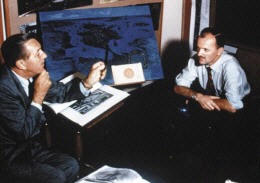 |
| Prince John watches his brother King Richard leave on Crusade |
Prince John (Hubert Gregg) watches his brother King Richard and his Crusading army leave for the Holy Land. One of my favourite scenes from Walt Disney's Story of Robin Hood and his Merrie Men (1952). This film contained so many visual feasts! It left me sitting spellbound in my local cinema.
It is difficult to describe to the younger generation what it was like growing up in the 1950s and 1960s. Our television was in grainy black a white, with a very small screen. Hi-definition and recording a programme off of it was something yet to be invented.
So visiting a cinema was not only a treat but an immersive experience, especially if the film was in colour!
 |
| Nottingham Castle |
One of the first TV programmes I can remember watching was the Richard Greene series The Adventures of Robin Hood (1955-1959). I was also a huge fan of everything Walt Disney produced. So, when I had the chance to see Disney's live-action movie The Story of Robin Hood at my local Granada Cinema, I was buzzing with excitement.
I saw it three times that week!
 |
| A disguised Marian finds Alan a Dale |
Disney's Story of Robin Hood inspired an interest in the outlaw's legend that has never left me. It also led to my love of history and genealogy.
So, I started this blog as a way of making others aware of this now almost forgotten Technicolor masterpiece.
But what made this version of the legend so special for me?
 |
| Nottingham Archery Tournament |
Where do I begin? To start with it oozes quality, in the host of actors, chosen by casting director Maud Spector. Stars like Peter Finch, Richard Todd, James Hayter, Martitia Hunt and Joan Rice- to name a few. The crews behind the camera are; legendary art director Carman Dillon and directors Ken Annakin and Alex Bryce. Also Director of Photography Guy Green, later to become co-founder of the British Society of Cinematographers.
I could go on and on.
It was Disney legend Perce Pearce who was chosen by Walt Disney to supervise and produce the film in England. It would be the last major movie to be made in Denham Studios in Buckinghamshire using some of its huge sound stages.
 |
| Friar Tuck |
Perce Pearce, Richard Todd, Carmen Dillon, scriptwriter Lawrence Edward Watkin and other members of the production unit made several research visits to Nottinghamshire and its archives during the Spring of 1951. It is this close attention to detail and respect for the legend that I admire and shows in the final cut.
The five images in this article demonstrate the visual beauty of this film, they were created by the legendary matte artist Peter Ellenshaw- another Disney legend, working many decades before the invention of computer generated imagery.
Ellenshaw's artistic skill, together with Carmen Dillon's art department created that storybook quality to the film. It is not surprising it was voted one of the best Technicolor movies ever made in Britain. Disney Magic!


















































